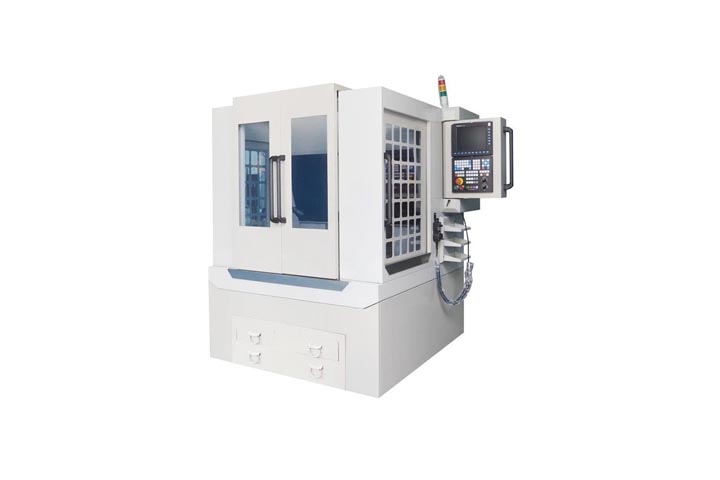CNC Engraving Machine
Application:
A CNC (Computer Numerical Control) Engraving Machine is a versatile piece of equipment used for carving, engraving, cutting, and machining various materials with precision and accuracy. It is suitable for processing non-metallic materials such as bronzing molds, electronic fixtures, and industrial automation industries such as aluminium plates, synthetic stones, glass fiber, Bakelite, glasses plates, and so on.
Features:
Computer Numerical Control (CNC): CNC technology allows the machine’s movements and operations to be controlled by computer programs. This enables precise control over the engraving process, resulting in consistent and high-quality output.
Versatility: CNC engraving machines can work with a wide range of materials, including metals (such as aluminium, brass, and stainless steel), plastics, wood, composites, acrylics, and even some types of stone. This versatility makes them suitable for a variety of applications across different industries, including signage, jewellery making, woodworking, aerospace, and more.
Engraving and Cutting: CNC engraving machines can perform a range of operations, including engraving (surface marking), carving (3D relief), cutting (straight or intricate shapes), drilling (holes), and milling (removing material to create 3D shapes). The machine’s capabilities depend on factors such as the type of spindle, cutting tools, and the machine’s axis configuration (3-axis, 4-axis, or 5-axis).
High Precision and Accuracy: CNC engraving machines are known for their ability to achieve precise and accurate results, thanks to the computer-controlled movement of the cutting tools. This allows for intricate designs, fine details, and tight tolerances to be achieved consistently.
CAD/CAM Integration: CNC engraving machines typically work in conjunction with CAD (Computer-Aided Design) and CAM (Computer-Aided Manufacturing) software. Designs are created or imported into CAD software, where they are converted into toolpaths and programmed for machining using CAM software. The resulting CNC programs are then executed by the machine to produce the desired engraving or cutting.
Automation and Efficiency: CNC engraving machines offer automation capabilities, allowing for continuous operation with minimal manual intervention. This increases productivity and efficiency, especially for batch production or repetitive tasks.
Customization and Personalization: CNC engraving machines are widely used for customizing and personalizing products, such as signage, trophies, plaques, jewellery, and promotional items. They enable the creation of unique and intricate designs, adding value and customization options for customers.
Technical Parameters:
| Model | JS-6060 | |
|---|---|---|
| Stroke | X Axis | 600 |
| Y Axis | 600 | |
| Z Axis | 120 | |
| Workbench | Length × Width | 600 × 600 |
| Maximum Load | 200 kg | |
| Spindle | Type | ER20 |
| Rotating Speed | 5000 ~ 24000 rpm | |
| Transfer Method | Electric Spindle | |
| Motor | 2.2KW | |
| Cooling | Spindle Water Cooling | |
| Feed | Rapid displacement(X, Y axis) | 15000 |
| Rapid displacement(Z axis) | 6000 | |
| Three-axis Slide | Three-axis linear guide | |
| Cutting Feed Rate | 1-6000 | |
| Three-axis motor(X, Y, Z | 0.75KW, 0.75KW, 0.75KW | |
| Accuracy | Positioning Accuracy | ±0.008 |
| Repeat Positioning Accuracy | ±0.005 | |
| Dimension | 1800 × 1600 × 1900 mm | |
| Weight | 2000 kg | |



